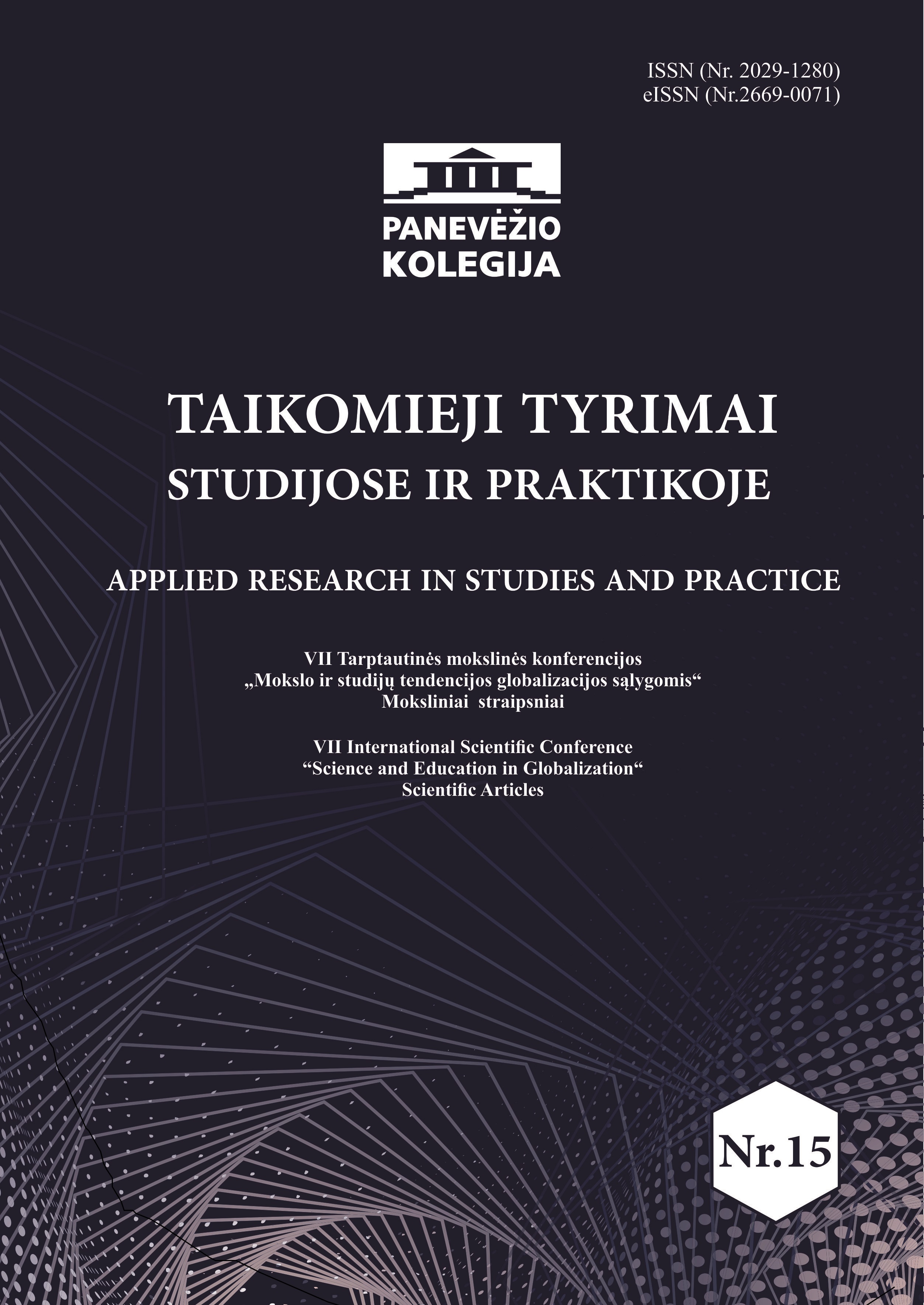VANDENS KOKYBĖS ĮVERTINIMAS BIOTESTAVIMO METODU PANEVĖŽIO RAJONO TVENKINIUOSE
WATER QUALITY ASSESSMENT BY BIOTEST METHOD IN PONDS OF PANEVEZYS DISTRICT
Author(s): Regina BačkienėSubject(s): Energy and Environmental Studies
Published by: Panevėžio kolegija
Keywords: phytoplankton;algae saprobicity;saprobic index;water quality class;
Summary/Abstract: Globally, surface water bodies are becoming more and more polluted as the population grows, industrial development and agricultural development intensify. Phytoplankton, macrozoobenthos, ichthyofauna, macrophytes should be investigated in the monitoring of surface water bodies. Biological indicators help to assess the ecological status of a water body more precisely. Phytoplankton in water bodies are mainly composed of different types of algae, which are used as biological indicators of water quality. Algae species diversity studies were conducted in July-August 2019. The aim of research is to determine the species diversity of algae and to evaluate the quality class of pond water Panevezys district. Research tasks: 1. To identify the species of algae of different systematic groups that are common in the water of the ponds. 2. To calculate the water saprobity indices of the studied ponds according to the prevailing species of diatoms. 3. To evaluate the water quality class of the studied ponds according to saprobicity indices. Research methods: analysis of scientific literature, biological analysis of aquatic algae, research statistical analysis of data. The research is available in Molainiai ponds of Panevėzys district. Water samples were taken and prepared according to the phytoplankton survey methodology in surface water bodies (Ministry of Environment of the Republic of Lithuania, 2003). Three water samples were taken from each pond for testing. The water was drawn at a depth of 0,20-0,50 m, into glass 1 liter containers from the surface water layer and from deeper layers. With the help of a brush, algae were collected from underwater substrates like rocks, hydrotechnical installations, aquatic plants. Water samples were preserved, concentrated and analyzed by a biological microscope Leica DM 500. Photographs of the identified algae species were made using the computer software and will be used to present the research material in the conference report. According to algae identification manuals, saprobic valence of identified algae species was determined, saprobic index of ponds were calculated, pond water quality class was assessed. Conclusions. Algae of three systematic compartments were identified in the investigated water bodies: cyanobacteria, green algae, diatoms algae. The most abundant identified were diatoms - 14 species, 10 species of green algae and 4 species of cyanobacteria The most abundant species of diatoms were identified in the studied ponds. Diatoms are considered as bioindicators of surface water quality. The study found that pond waters is a β-mesosaprobic zone and is classified as a semi-moderately polluted water class.
Journal: Taikomieji tyrimai studijose ir praktikoje
- Issue Year: 15/2019
- Issue No: 1
- Page Range: 97-104
- Page Count: 8
- Language: Lithuanian

